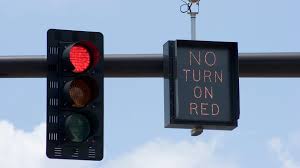In cities across the United States and beyond, a quiet yet impactful debate is underway: Should the longstanding rule allowing right turns on red lights be scrapped? For decades, the ability to make a right turn at a red light—after yielding to oncoming traffic and pedestrians—has been a hallmark of traffic systems, designed to save time and reduce congestion. But as urban planners and safety advocates reevaluate its effects, some cities are taking steps to limit or ban the practice altogether.
Here’s what we know about the growing movement, the reasons behind it, and how it might affect your daily commute.
The Origins of Right Turns on Red
Right turns on red became widespread in the United States during the 1970s, largely as an energy-saving measure during the oil crisis. Allowing vehicles to make right turns without waiting for a green light helped reduce idling times, saving fuel and decreasing emissions. Over time, the rule became a norm, implemented in most U.S. states and adopted in some other countries.
However, what was once seen as a simple convenience is now being questioned for its safety implications. According to the Federal Highway Administration (FHWA), intersections are among the most dangerous spots on roads, with pedestrian and cyclist injuries and fatalities on the rise in recent years.
Why Cities Are Rethinking the Rule
One of the primary reasons for reconsidering right turns on red is pedestrian safety. Advocates argue that allowing vehicles to turn at red lights creates conflicts between drivers and pedestrians, especially at busy intersections or in urban areas where foot traffic is high.
The National Highway Traffic Safety Administration (NHTSA) has noted an alarming increase in pedestrian fatalities over the past decade, with 2022 recording nearly 7,500 deaths—the highest in 40 years. Many of these fatalities occurred at intersections, prompting cities to explore ways to reduce risks.
In addition to pedestrian concerns, the rise of cycling as a sustainable mode of transportation has added another layer to the discussion. Cyclists often feel vulnerable at intersections where vehicles make right turns, as drivers may fail to yield properly or misjudge distances.
Cities Leading the Charge
Several cities are already taking action. Washington, D.C., has implemented a ban on right turns on red at over 100 intersections, with plans to expand the policy further. New York City has also limited right turns on red in most areas, citing its Vision Zero initiative—a program aimed at eliminating traffic deaths.
In California, lawmakers have introduced legislation to empower local governments to prohibit right turns on red in areas with high pedestrian and cyclist traffic. Similar discussions are taking place in Chicago, Seattle, and Boston, where city officials are assessing the potential benefits of such bans.
The push isn’t limited to the U.S. either. Cities like Montreal, Canada, have long prohibited right turns on red to prioritize pedestrian safety, serving as a model for other urban centers.
The Case Against a Ban
Not everyone supports the idea of banning right turns on red. Opponents argue that such restrictions could lead to increased congestion and longer commute times, especially in sprawling urban areas with limited public transportation options.
Additionally, some drivers believe that the rule, when followed correctly, poses little risk. They point to educational campaigns and enforcement as better solutions than an outright ban, arguing that improving driver awareness and adherence to existing laws could achieve the same safety outcomes.
Balancing Convenience and Safety
For cities considering a ban, the decision often comes down to balancing convenience with safety. In areas where pedestrian and cyclist traffic is low, right turns on red may remain a practical option. However, in dense urban environments, safety concerns may outweigh the convenience factor.
Planners are also exploring alternative solutions, such as “No Turn on Red” signage at specific intersections, dedicated pedestrian signals, and protected bike lanes. These measures aim to reduce conflicts without eliminating the rule entirely.
What This Means for Drivers and Pedestrians
If your city decides to ban right turns on red, you’ll likely need to adjust your driving habits. Failing to comply with the new rules could result in fines or penalties, so staying informed is key.
For pedestrians and cyclists, such changes could lead to safer, more accessible streets. Advocacy groups like the National Association of City Transportation Officials (NACTO) argue that prioritizing non-motorized traffic is essential for building sustainable and equitable urban spaces.
How to Stay Updated
To find out whether your city is considering a ban on right turns on red, consult your local Department of Transportation or city planning office. Many cities provide updates on transportation policies through their official websites. For example, the Federal Highway Administration and National Highway Traffic Safety Administration are excellent resources for national traffic safety guidelines and trends.
The Road Ahead
As urban landscapes evolve, so too must the rules that govern them. While banning right turns on red may seem like a small change, its potential to save lives and make streets safer cannot be ignored. At the same time, cities must weigh the practical implications for drivers and the broader transportation system.
Whether or not your city adopts this policy, the conversation underscores the importance of creating roadways that serve everyone—drivers, pedestrians, and cyclists alike. In the end, the goal is clear: safer streets for all.
Disclaimer – Our team has carefully fact-checked this article to make sure it’s accurate and free from any misinformation. We’re dedicated to keeping our content honest and reliable for our readers.








